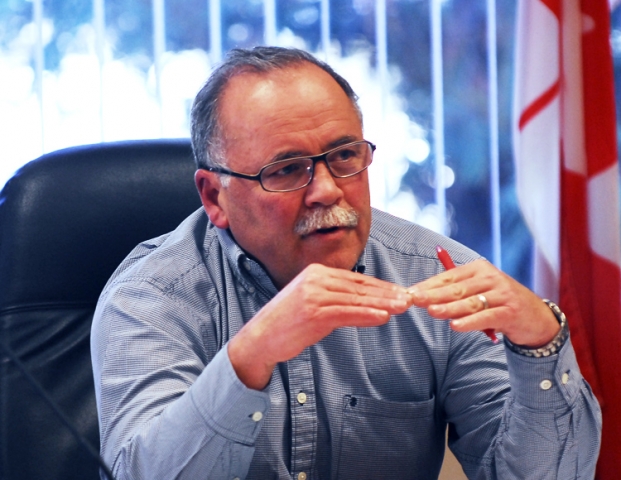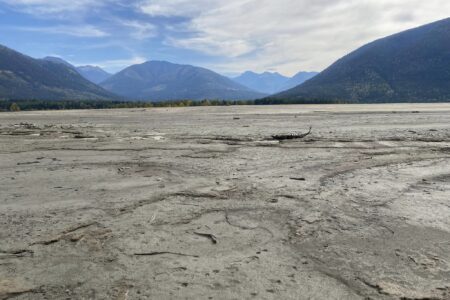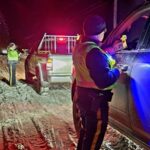Going Postal: Canada Post missive could create division in rural areas regional district CAO predicts
By Timothy Schafer, The Nelson Daily
A move by Canada Post to “modernize” mailing addresses in rural communities in the regional district could be divisive, costly and time consuming, warns the RDCK’s chief administrative officer.
Jim Gustafson’s report to the Regional District of Central Kootenay at their inaugural board of directors meeting Thursday in Nelson advised the RDCK does not want to become involved with applying a municipal template of addresses to rural areas, nor accept responsibility for mapping out the boundaries of rural communities.
Canada Post is in the process of changing rural post office box numbers to street addresses in an ongoing basis across Western Canada, a move which requires setting out definitive boundaries for rural, unincorporated communities, and to provide accompanying mapping.
In Area A (East Shore) where the process has already begun, considerable RDCK staff time and money has been spent, and the communities are in an uproar as people learn they live in a different community than the one they have hisorically identified with.
“Using some of the historic names on one inventory has come as a shock to some people who have believed they have lived somewhere else over time,” said Area A director Gary Jackman.
“And we have been caught in middle as the keepers of the maps.”
He said for the process to be done properly there needs to be some sort of public process, not just taking 40-year-old maps and saying they will suffice.
“This is not a little deal,” said RDCK board chair John Kettle, the director for Area B.
In Lister on the East Shore, he said, people are now referred to as being from Creston. They no longer have a Lister address because it has been changed.
Between Nelson and Castlegar there are probably 15 communities, said Gustafson. But the regional district doesn’t want to be the one to establish the definitive boundaries of those communities, he explained.
“Some people love to identify themselves from South Slocan, while others would abhor the notion,” said Gsutafson “Things are that divided. If we have to do this across the regional district for Canada Post, it will be (difficult).”
Even amongst people living in a community there are disagreements as to where the boundaries lie, said Gustafson.
The regional district board in Fraser Fort George decided to skirt the issue by claiming all residents were from one area, rather than getting involved in naming separate communities and establishing boundaries.
“And I suspect that is exactly the same here and the issues would be equally divisive to the board and to you as directors to determine where the boundary rests for a community,” said Gustafson.
And Canada Post has not indicated any willingness to compensate the regional district for the work involved, or to support a public process to define the communities. Their view is that addressing is the civic responsibility of the local government.
Although the regional district established fire addresses for each home in the RDCK with the advent of 911 several years ago, they have not named the communities, Gustafson said.
“But we are not in a position to call each whole area one community and under A, B, C, D, etc.,” said Jackman. “We have names hung on these communities which may not fit well with modern times, but they may require a little more research.”
The regional district represents the interests of unincorporated communities, said Gustafson, but to become fully engaged in the issue would require additional personnel and resources.
“The changeover process may be cumbersome, costly, contentious and time consuming,” he said in his report.
If the RDCK becomes an active participant, it should be done on the basis of a contract with Canada Post, he advised.
Although the matter overall will be referred to the next Rural Affairs committee meeting in January, Jackman proposed forwarding maps of the completed areas in Area A, and then invoicing Canada Post for them.
“Canada Post has put us in a position where our constituents are coming through to the regional district for clarification on a project Canada Post could have managed differently and more effectively,” he said. “It has involved our regional district staff even though it was not part of our work plan to do so.”
Jackman wanted to send the message to Canada Post that the regional district’s time was of value.
When the time comes, the public will be advised that mailing addresses are being changed to civic addresses, specific community identification and postal codes.
Background
The regional district has been providing civic addresses to the residents of the RDCK since the 1970s.
The system is a mature system has evolved to suit the needs of the RDCK, which includes emergency response, application processing and permitting.
Using that system and the current tools provided by the regional district anyone can pinpoint the exact location of any address in the RDCK.
That information is available to Canada Post, with a list of every address within the regional district.
























Comments